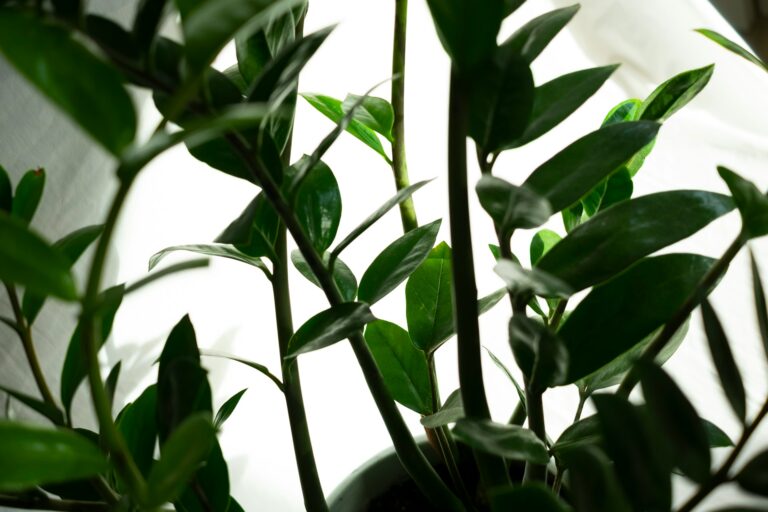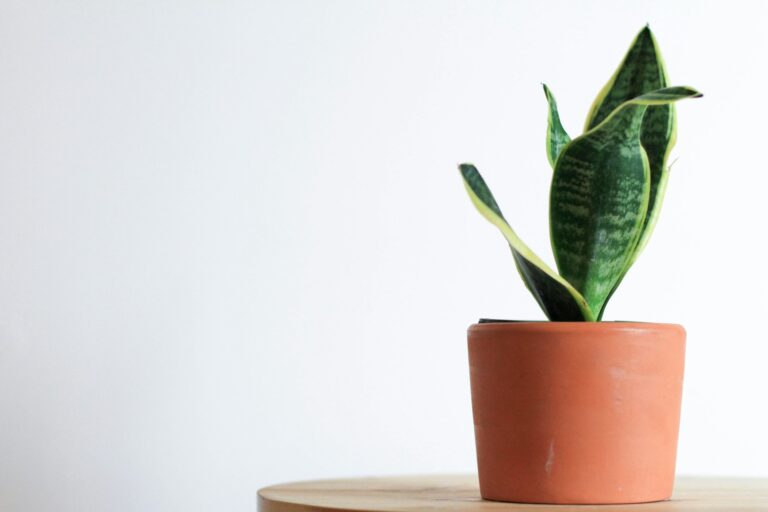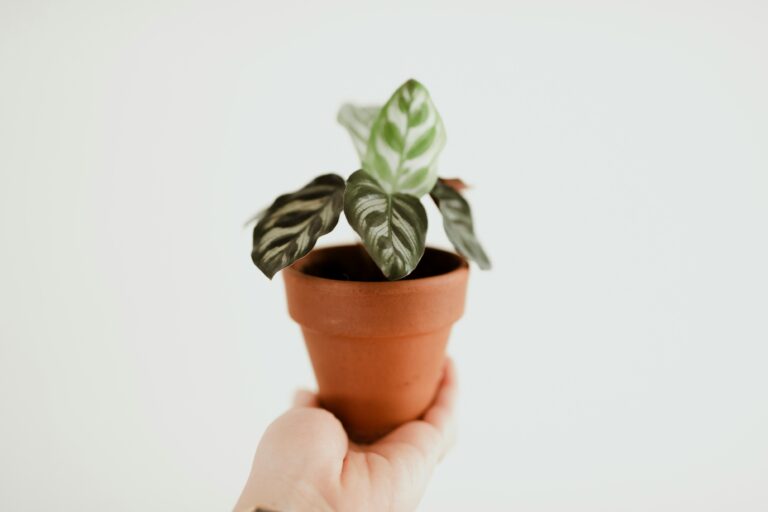Alocasia Bambino is a vibrant and exotic plant known for its distinctive arrowhead-shaped leaves. The plant originated from Asia and eastern Australia’s tropical forests. It’s one of the most beautiful plants to incorporate into your garden.
But, whenever you have a beautiful plant, you have to encounter some problems when it’s growing. For instance, you may notice your Alocasia Bambino leaves turning yellow. That can be a cause for concern.
As the plant owner, you may be worried about what is causing Alocasia Bambino yellow leaves. Several things can cause your plant leaves to turn yellow. They include aging, improper watering, improper lighting, nutrient deficiency, low humidity levels, poor soil quality, pests and diseases, transplant shock, and temperature changes.
Once you understand the potential causes of yellow leaves on Alocasia Bambino, you can implement the appropriate care techniques to restore the plant’s health.
Read the article to understand the causes of Alocasia Bambino leaves turning yellow in detail and the possible prevention methods.
What causes Yellow leaves on Alocasia Bambino Leaves?
Here are the causes and possible ways to prevent your plant from turning yellow.
Plant Aging.
Plant aging is a natural and inevitable process that affects all living organisms, including Alocasia Bambino plants. As your Alocasia Bambino ages, its leaves go through a lifecycle that includes growth, maturity, and eventual senescence.
One of the primary reasons for yellowing leaves in aging Alocasia Bambino plants is the natural degradation of chlorophyll, the pigment responsible for the green coloration of leaves. Over time, the chlorophyll molecules in the leaves break down and lose their efficiency, reducing green pigmentation. As a result, the leaves gradually turn yellow.
Additionally, as Alocasia Bambino plants age, their metabolic processes start to slow down. The plant’s ability to absorb nutrients from the soil may decline, leading to deficiencies in essential minerals and elements.
It’s worth noting that certain environmental factors and care practices can accelerate the yellowing of leaves in Alocasia Bambino plants. Factors such as excessive sunlight exposure, improper watering routines, inadequate humidity levels, or pest infestations can all contribute to premature leaf yellowing and deterioration.
To mitigate the effects of plant aging on Alocasia Bambino leaves, providing optimal growing conditions and practicing proper care techniques becomes essential.
Improper Watering.
If you water your plant carelessly, it can cause the leaves to turn yellow. That includes both overwatering and underwatering.
Overwatering can lead to root rot and oxygen deprivation in the root zone. When the roots are suffocated and unable to function correctly, they struggle to absorb water and essential nutrients effectively. As a result, the Alocasia Bambino leaves turn yellow.
On the other hand, underwatering occurs when the plant does not receive enough water to meet its requirements. Insufficient moisture in the soil can cause the Alocasia Bambino’s leaves to wilt and turn yellow. In response to water scarcity, the plant will prioritize allocating available resources to vital functions, leaving older leaves to suffer. When the plant lacks sufficient water, it may also enter a state of dormancy or conserve resources by shedding older leaves, resulting in yellowing and eventual leaf drop.
Both overwatering and underwatering can also create favorable conditions for the growth of fungi and bacteria, leading to root diseases. These pathogens further compromise the plant’s ability to uptake water and nutrients, exacerbating the yellowing of leaves.
Water your plant when the soil is dry. Avoid overwatering or underwatering. The best way to do that is to create a watering schedule or water only when the top inch of the soil is dry. You can test moisture content using your finger or a moisture meter.
Improper Lighting.
Alocasia Bambino grows well in bright indirect sunlight but can tolerate medium light. Improper lighting occurs when too much or little sunlight is available to the plant.
When the plant receives excess sunlight, you will notice burnt leaves, while when it receives low sunlight, the leaves will turn yellow due to the lack of light necessary to perform photosynthesis.
On the other hand, excessive light exposure can also cause yellowing leaves in Bambino Alocasia plants. Direct sunlight, especially during the hottest parts of the day, can result in leaf burn and damage. Intense sunlight can scorch the leaves, leading to yellowing, browning, or even white patches.
Ideally, place your plant in a location that receives bright, indirect light. This can be near a north or east-facing window where the plant can receive bright, filtered light throughout the day. If direct sunlight is unavoidable, consider using sheer curtains, blinds, or placing the plant slightly away from the window to diffuse the intensity of sunlight.
On the other hand, if you notice your Bambino Alocasia has been exposed to excessive light and is experiencing leaf burn or yellowing, it’s best to relocate the plant to a spot with less intense light.
Nutrient Deficiency.
Nutrient deficiency is a common cause of yellow leaves in Alocasia Bambino plants. When the plant does not receive an adequate supply of essential nutrients, it struggles to carry out vital metabolic processes, leading to various physiological imbalances that manifest as leaf discoloration.
One of the nutrients that can contribute to yellowing leaves is nitrogen (N). Nitrogen is crucial for producing chlorophyll, the pigment responsible for the green color in leaves. When a plant lacks sufficient nitrogen, it cannot synthesize enough chlorophyll, resulting in a reduced green pigment and the appearance of yellowing leaves.
Iron deficiency, also known as chlorosis, can cause leaves to turn yellow while the veins remain green. This condition hinders the plant’s ability to produce chlorophyll, impairing its overall photosynthetic capacity.
Other essential nutrients, such as magnesium (Mg) and potassium (K), also play critical roles in maintaining healthy leaf coloration. Magnesium is a central component of chlorophyll molecules, and its deficiency can lead to yellowing leaves. Potassium, on the other hand, affects overall plant growth and metabolism. Inadequate potassium levels can cause the plant to exhibit yellowing, necrosis (tissue death), or brown spots on the leaves.
When fertilizing the plant, use a balanced, water-soluble fertilizer formulated for indoor plants. Follow the manufacturer’s instructions for dosage and frequency. Also, regularly tests the soil to identify specific nutrient deficiencies.
Low humidity levels.
Low humidity levels can indeed contribute to the yellowing of leaves in Alocasia Bambino plants. These plants are native to tropical regions and thrive in highly humid environments.
When humidity levels are low, the air surrounding the plant becomes dry. As a result, the plant experiences increased transpiration, which is water vapor loss through the leaves. Low humidity can accelerate moisture evaporation from the leaf surface, intensifying the concentration of minerals and salts.
This can cause salt buildup in the soil, inhibiting the plant’s ability to absorb water and nutrients properly. As a result, nutrient deficiencies can occur, further contributing to leaf yellowing.
Providing an environment with adequate moisture is crucial to prevent low humidity from causing yellow leaves in Alocasia Bambino plants. Here are a few strategies to increase humidity levels around the plant:
- Use a humidifier
- Group plants together
- Use pebble trays
- Mist the leaves
- Create a humidity tent
Poor soil quality.
The soil serves as the plant’s primary source of nutrients and water. When the soil lacks essential components or has unfavorable conditions, it can lead to various issues, including leaf discoloration.
Nutrient Deficiencies: Poor soil quality may cause a lack of essential nutrients necessary for the plant’s growth and development. Insufficient levels of nutrients such as nitrogen (N), iron (Fe), magnesium (Mg), or potassium (K) can cause yellowing leaves in Alocasia Bambino plants.
pH Imbalance: The soil’s pH level affects nutrient availability to the plant’s roots. Alocasia Bambino plants prefer slightly acidic to neutral soil pH. When the soil pH is too high (alkaline) or too low (acidic), it can create imbalances in nutrient uptake. Certain nutrients may become unavailable or inaccessible to the plant, leading to nutrient deficiencies and yellowing leaves.
Poor Drainage: Alocasia Bambino plants prefer well-draining soil that allows excess water to flow away from the roots. If the soil has poor drainage, it can lead to waterlogging and root rot. When the roots are continuously exposed to excessive moisture, they become deprived of oxygen, leading to root damage and impaired nutrient uptake. As a result, the plant may exhibit yellowing leaves as it struggles to obtain essential nutrients.
Compacted Soil: Soil compacted or lacking sufficient aeration can hinder root development and nutrient absorption. Compact soil prevents roots from spreading and accessing nutrients effectively. The plant may have nutrient deficiencies in such conditions, leading to yellowing leaves.
Soil Contaminants: Low-quality soil may contain contaminants, such as heavy metals or pollutants, which can adversely affect the plant’s health and leaf coloration. These contaminants can interfere with nutrient absorption and disrupt normal plant functions, resulting in yellowing leaves.
To address poor soil quality and prevent yellow leaves in Alocasia Bambino plants, consider the following steps:
- Incorporate organic matter, such as compost or well-rotted manure, into the soil to improve its structure, nutrient content, and drainage.
- Conduct a soil test to determine its pH and nutrient composition. Based on the results, adjust the pH using appropriate soil amendments and supplement any nutrient deficiencies with suitable organic or slow-release fertilizers.
- Ensure the soil is well-draining and avoid overwatering to prevent waterlogged conditions. Adjust the watering frequency based on your plant’s specific needs and the soil’s moisture level.
- Use pots or containers with drainage holes to ensure excess water can easily escape. Additionally, consider adding a layer of rocks or gravel at the bottom of the pot to enhance drainage.
Pests and diseases.
Pests and diseases often attack plants causing an impact on their health. As the problem progresses, Alocasia Bambino leaves turn yellow and eventually die. Various pests and diseases can directly or indirectly cause yellowing leaves through different mechanisms:
Pests such as spider mites, aphids, thrips, or mealybugs can feed on the plant’s sap, causing damage to the leaves. These pests pierce the plant tissues and extract nutrients, weakening foliage and yellowing. Additionally, some pests inject toxins into the plant while feeding, which can further contribute to leaf discoloration and damage.
Fungal diseases, such as leaf spot, powdery mildew, or root rot, can affect Alocasia Bambino plants. Fungal pathogens can attack the leaves, stems, or roots, disrupting normal physiological processes. As the fungus spreads and damages the plant tissues, the leaves may exhibit yellow spots, patches, or overall yellowing.
Bacterial diseases, such as bacterial leaf spot or bacterial wilt, can also lead to yellowing leaves. These infections typically cause dark, water-soaked lesions on the leaves, which can turn yellow as the tissue dies. Bacteria can disrupt the plant’s vascular system, limiting water and nutrient uptake and resulting in leaf yellowing and wilting.
Viruses can infect Alocasia Bambino plants, causing various symptoms, including yellowing leaves. Viral infections can disrupt normal metabolic processes, affect chlorophyll production, and weaken the plant’s health, leading to yellowing and other leaf abnormalities.
To prevent yellowing leaves caused by pests and diseases in Alocasia Bambino plants, it is essential to maintain good plant hygiene and implement appropriate control measures:
- Regularly inspect your plant for signs of pests, such as webbing, tiny insects, or visible damage. Check for unusual spots, lesions, or wilting that may indicate a disease.
- If pests are detected, promptly address the infestation using appropriate methods, such as insecticidal soaps, neem oil, or natural predators, depending on the specific pest. Follow the recommended instructions and ensure thorough coverage of the affected plant parts.
- If you suspect a disease, identify the specific pathogen and apply appropriate control measures. This may include removing and destroying infected plant parts, improving air circulation, reducing humidity, or applying fungicides as recommended.
- When introducing new plants to your collection, quarantine them for a period to prevent the spread of pests and diseases to healthy plants.
- Provide your Alocasia Bambino with optimal growing conditions, including proper watering, adequate light, and well-draining soil. A healthy and well-maintained plant is better equipped to resist pests and diseases.
FAQs
Should you cut the yellow leaves off the Alocasia Bambino plant?
Yes. If you notice yellow leaves on your plant and have identified the problem, cut off the yellow leaves to avoid spreading to other parts of the plant. Ensure you use a clean and sharp garden knife to make a clean cut.
Can yellow Alocasia leaves be saved?
Once a plant leaf has turned yellow, it’s not easy to save; however, you can save the rest of the plant by cutting off the affected leaf to avoid spreading to other healthy leaves.


